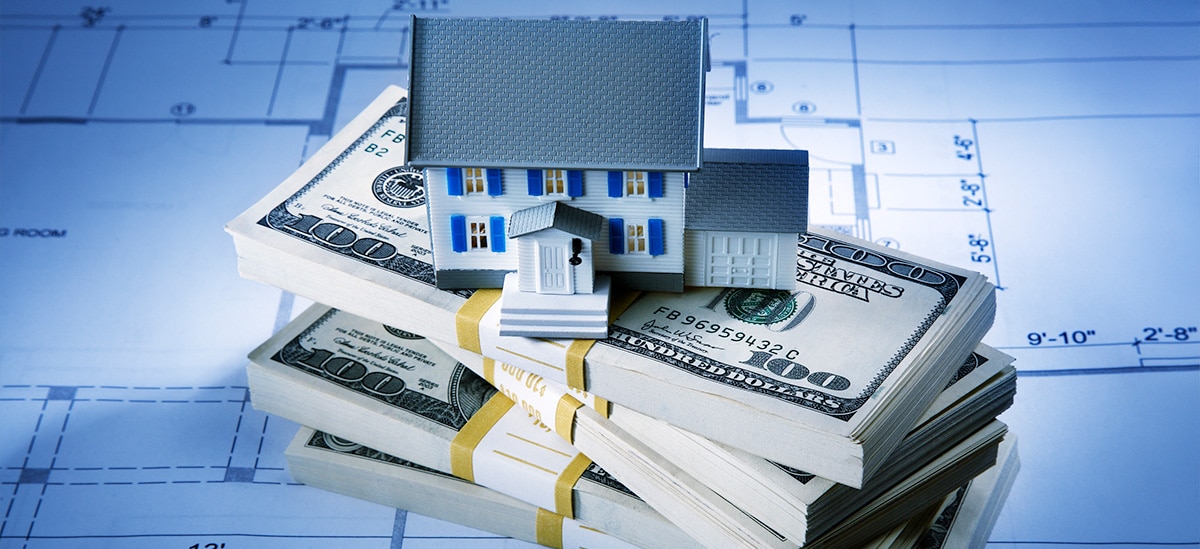
- Refinancing replaces your existing mortgage with a new mortgage under new terms.
- Mortgage refinancing is commonly used to lower interest rates, lower monthly payments, convert to a fixed-rate mortgage for more stable payments over the long term, or help homeowners “cash out” a portion of their home equity.
- Before refinancing, compare the costs to the potential savings (or other benefits) to make sure a refinance is the right move for you.
Mortgage refinancing can help homeowners save money or access funding for useful purposes, such as financing home improvement projects or consolidating debt. However, there are costs and potential risks to be considered before proceeding with a mortgage refinance.
In this article, you’ll learn how mortgage refinancing works and explore the pros and cons so you can determine if refinancing is the right solution for you.
What Is Mortgage Refinancing?
Mortgage refinancing is when you replace your existing mortgage with a new mortgage under new terms.[1]
There are several compelling reasons to refinance, depending on your financial situation and general market conditions. For example, refinancing can be used to:
- Lower your interest rate. If you can secure a lower interest rate today than the rate on your existing mortgage (due to lower market rates, improvements to your credit score, or both), you can potentially reduce your monthly payment and the total interest expense you’ll pay over the life of the loan.
- Reduce your payment amount by extending the loan term. By spreading the remaining balance over more months, you can reduce the amount you pay each month. However, this can result in higher overall interest expense because the longer loan term results in more interest.
- Change your loan type. You might wish to exchange an adjustable-rate mortgage (ARM) for a fixed-rate mortgage for more predictable monthly payments over the long term, for example.
- Convert some of your equity to cash while changing the terms of your existing mortgage. Cash-out refinancing allows you to tap into your home equity to access funds for purposes like consolidating debt or financing home renovations. As a side note, if you are interested in converting some of your equity to cash but don’t want to change the terms of your existing mortgage, you can consider financial tools like home equity loans and home equity lines of credit (HELOCs).
How Does Refinancing a Mortgage Work?
When you refinance a mortgage, you take out a new home loan to pay off your existing home loan. Then, you’ll repay the new loan as outlined in your new loan agreement.
Because refinancing requires the lender to underwrite and originate a new loan, there are costs associated with refinancing. It is important to consider these costs when deciding whether a refinance makes financial sense for you. You can use an online refinance cost calculator to estimate the potential costs.
Refinancing replaces your previous mortgage loan terms with new terms, including:
- A new interest rate. Your new rate is based on current market conditions as well as your financial profile, including your credit score, debt-to-income ratio (DTI), and equity in the property.
- A new loan duration. If you want to pay off your loan sooner, you could opt for a shorter duration than the time remaining on your existing loan. If you want to reduce your monthly payment, you could opt for a longer duration than the time remaining on your existing loan.
- A possible change in your loan balance. Your loan balance could change if you roll the cost of the refinance into the new loan or cash out a portion of your home equity.
- A new monthly payment. The changes in interest rate, duration, and loan balance may result in a new monthly payment that could be higher or lower than your current payment, depending on how your new loan is structured.
- A possible change in your lender. If you’re unhappy with your current lender, you can refinance with a new lender.
A possible change in your loan type. Depending on your situation, you might change from an ARM to a fixed-rate mortgage or from an FHA loan to a conventional loan. Your lender can help you evaluate different mortgage loan types to determine the option that best suits your goals.
Types of Mortgage Refinancing
There are two primary types of mortgage refinancing:
Rate-and-Term Refinancing
Rate-and-term refinancing is when the new mortgage replaces the interest rate and/or loan term on the existing mortgage, but no cash is pulled out of the home equity.
The purpose of a rate-and-term refinance is often to reduce monthly payments, overall interest expense, or both. If you can secure a lower interest rate, your monthly payment and overall interest expense could both decrease. Alternatively, you could opt for a shorter loan term, increasing your monthly payment, but saving more money in interest rate expense over the long term.
Rate-and-term refinancing is also commonly used to convert ARMs to fixed-rate mortgages. If you currently have an ARM, in which the interest rate changes at pre-determined intervals, refinancing to a fixed-rate mortgage allows you to lock in today's rates for the term of the loan. This can provide more predictable long-term mortgage payments since the interest rate does not change on a fixed-rate mortgage. It could also save you money if interest rates increase in the future.[2]
Cash-out Refinancing
Cash-out refinancing is when you accept a new mortgage for a higher amount than your existing loan balance. The new loan pays off the existing loan, and you pocket the difference (minus any closing costs). These funds can be used as you like, with many homeowners using them to add value to their homes through improvement projects or to consolidate high-interest debt into their lower-interest mortgages.
To qualify for a cash-out refinance, you need to have enough equity in your home to meet the lender’s equity maintenance requirements even after converting some of your equity to cash. For example, imagine that you owe $300,000 on a home that’s currently worth $500,000. If the lender requires you to retain at least 20% equity, you could borrow up to $400,000 ($500,000 x 80%). After paying off your $300,000 balance, you could potentially pocket the remaining $100,000 (minus any closing costs).
Eligible clients may be able to roll these closing costs into the new refinanced mortgage loan amount and pay nothing out-of-pocket at closing.
Steps to Refinance a Mortgage
Refinancing a mortgage is a process. You must qualify for the refinance based on similar criteria to those used when you applied for the original mortgage. Here is a step-by-step overview of the mortgage refinancing process.
Step 1: Assess Your Current Mortgage and Financial Situation
Start by reviewing your current mortgage, paying close attention to the remaining loan balance, remaining loan duration, and interest rate.
Then, check with a local real estate agent to estimate how much your house is currently worth. The current value of your home minus the balance remaining on your current mortgage equals your home equity. This figure is important because lenders typically require that homeowners retain a certain amount of equity in the home, such as 20%. If you have less than 20% equity, you might not qualify for a refinance. However, it is important to discuss specifics with your lender, as requirements vary by lender and loan type.
Step 2: Shop For Mortgage Lenders and Compare Mortgage Rates
Different lenders may offer different rates and terms, so it is important to shop around to find an offer that works for you.
Step 3: Gather Necessary Documents for the Loan Application
To apply for a refinance, you’ll need to submit documentation relating to your income, assets, and property. You can download the Refinance Application Checklist for a detailed list of required documents, but here is a simplified overview:
- Proof of income: Pay stubs for the last 30 days, W-2 forms for the last two years, and 1099s for the last two years. If you’re self-employed, tax returns for the last two years plus a year-to-date business profit-and-loss statement for the current year may suffice.
- Property information: The most recent property tax bill and homeowners insurance policy.
- Proof of assets: Account statements for the last three months.
Step 4: Apply for the New Loan and Await Underwriting
Many lenders accept applications for mortgage refinancing through convenient online platforms. You can complete the digital application and upload your supporting documents without leaving your home.
Once your application is submitted, the underwriter can review your documentation, verifying the information provided as needed. The underwriter might need to clarify finer points, so it is important to remain available and respond promptly to any requests for more information.
Step 5: Close the Refinance
Once approved, you can sign the loan documents for your new mortgage, pay any closing costs (if they are not being rolled into the loan), and close the refinance. Then, you can begin paying the new loan in accordance with your new mortgage statements.
Pros and Cons of Mortgage Refinancing
The benefits of refinancing include the following:
- Your interest rate could go down if current rates are lower than your existing mortgage rate.
- A lower interest rate or longer loan term could reduce your monthly payment.
- Switching from an ARM to a fixed-rate mortgage could make your long-term payments more predictable.
- A cash-out refi allows you to tap into home equity for cash.
- You can use funds from a cash-out refi to consolidate debt at a lower interest rate or fund a home renovation project.
The potential downsides of refinancing include the following:
- Closing costs could take years to recover through savings on lower payments or reduced interest.
- Extending the loan term could increase the total interest paid.
- Cashing out some of your equity temporarily reduces the equity stake in your home.
- Your credit score could take a temporary hit from the credit inquiry followed by the new loan, which reduces the average length of your credit lines.
- The process can be time-consuming and involves a bit of paperwork.
The Bottom Line
Whether your goal is to reduce your monthly mortgage payment, save on interest expense, or cash out some of your home equity, refinancing is a versatile tool that may help you reach your financial goals. Before you refinance, weigh the costs against the benefits to make sure a mortgage refinance makes sense for you.





 ©2026 The PNC Financial Services Group, Inc. All rights reserved.
©2026 The PNC Financial Services Group, Inc. All rights reserved.